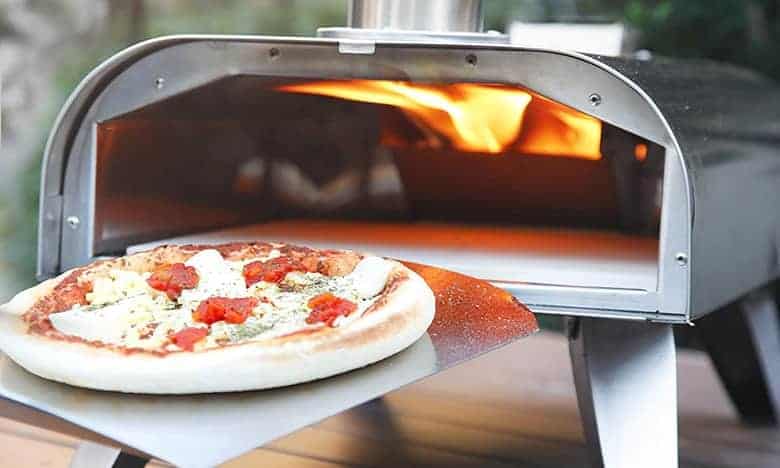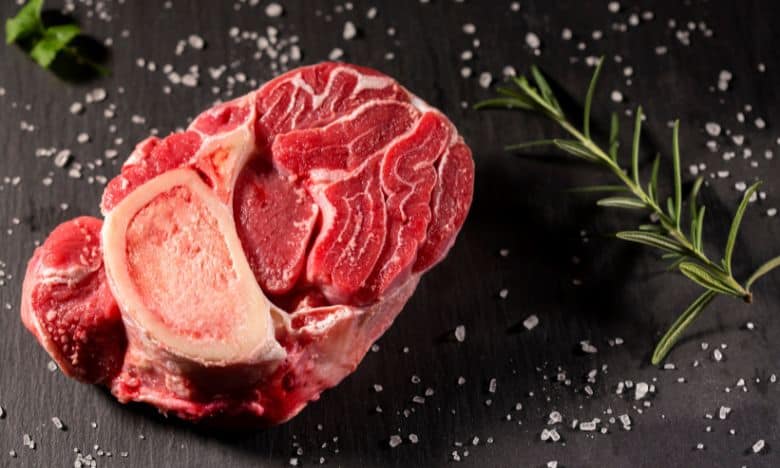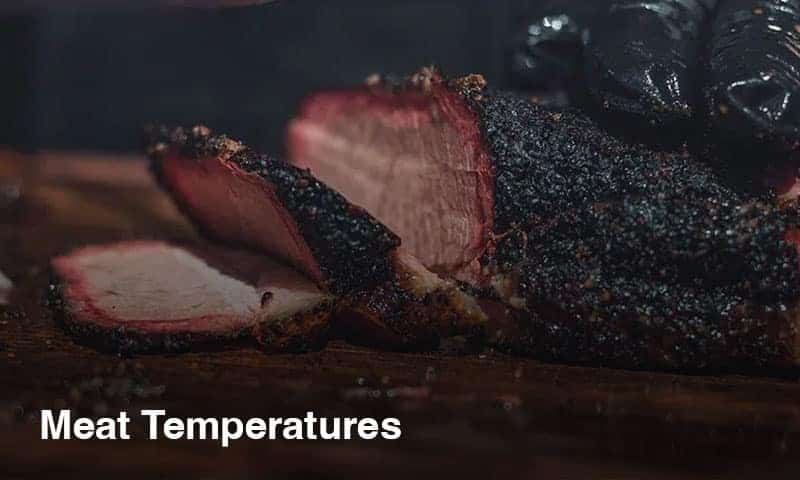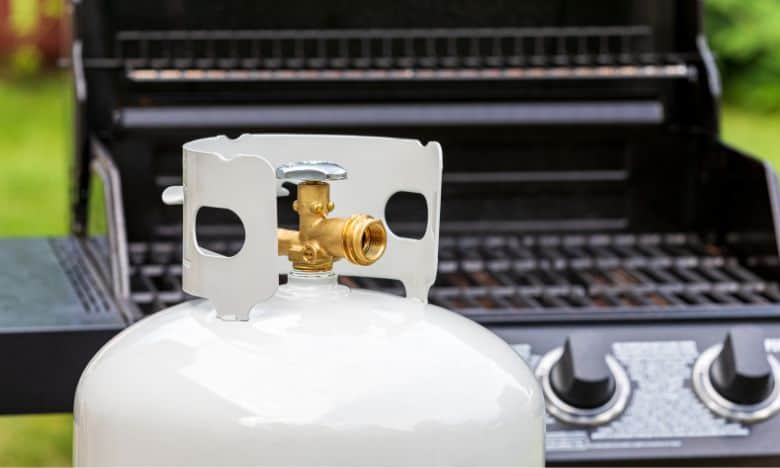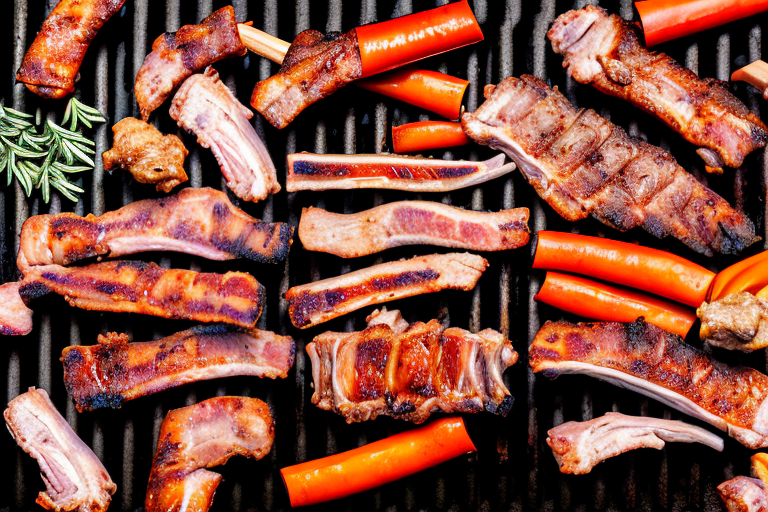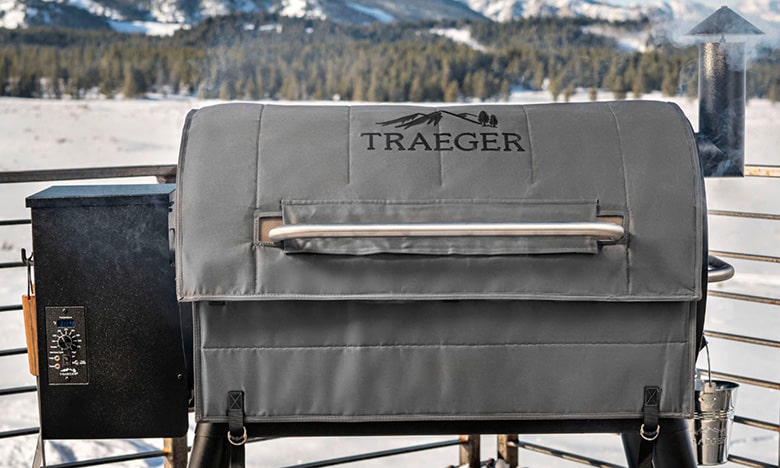If you’re trying to figure out what the best wood for pizza ovens is, you’re in the right place. Biting into a perfectly cooked pizza with the smoky aroma of a wood-fired oven is an experience like no other. But how does one make sure they select the best wood for their pizza oven to get maximum taste and texture out of every bite?
In this guide, we’ll explore which type of firewood can best affect your pizza’s flavor. We’ll also cover seasoning and drying techniques so you won’t miss out on that unforgettable charcoal-roasted crust!
Short Summary
- Discover the perfect wood for your pizza oven with hardwoods like oak, maple, hickory, and fruitwoods like apple, cherry & peach!
- Get optimal performance in your pizza oven by properly seasoning and drying firewood below 20% moisture content.
- Experiment with different wood combos to create unique flavor profiles that will take your pizzas to a whole new level!
Table of Contents
Choosing the Best Wood for Pizza Ovens

Finding the perfect type of wood for your pizza oven is essential to getting that ideal slice. Depending on what kind you use, it can influence heat levels, flavor profiles and even how easy it is to start a fire in there or maintain its blaze. Great choices include maple, oak and applewood when talking about fuel for these types of ovens.
So let’s go through their different characteristics and discover which one suits our needs best! From high-heat hardwoods to local sustainable woods and fruit woods, here we’ll assess each option so you can get pizzeria quality every time you fire up that pizza oven!
High Heat Hardwoods
High heat hardwoods, such as oak wood, hickory wood, maple wood, pecan wood, and birch wood, make perfect options for pizza ovens. This type of wood can create a special flavor to the food due to its ability to burn at higher temperatures than other woods.

Oak firewood is an especially popular option since it burns hot yet slowly with minimal smoke. This makes it especially suitable for various dishes being cooked in wood fired ovens.
Hickory firewood is another good example when considering high-heat firewood choices because of its powerful taste and capability reaching peak temperature levels. Achieving high heat levels in your wood burning oven is especially important if you want to create that mouthwatering leopard print crust.
To bring out even more from this intense aroma, we recommend mixing in some milder types like applewood to get truly unique flavors out of your wood burning pizza oven.
Fruitwoods for Flavor
Fruitwoods, such as apple wood, cherry wood and peach wood, offer a unique flavor experience to your pizzas.
We love peach wood because it delivers an aromatic fruity touch along with a slight sugariness that brings the wood fired cooking flavor up a whole other level. Pecan is another excellent option that offers a subtly nutty but still sweet flavor.
If you want to enhance the flavors even more, try combining various high heat hardwood types with fruitwood varieties. Experimenting with different fruit woods will let you craft delectably tantalizing aromas and textures for your wood fired pizzas, making a truly delightful pie!
Local and Sustainable Options
When it comes to selecting the best wood for your pizza oven, utilizing local and sustainable options is key.
Hardwoods like oak, maple, hickory, mesquite, apple, and cherry are preferred due to their clean-burning properties as well as being environmentally friendly. Using locally available woods also minimizes any potential threat of insect contamination or disease spread.
How to Properly Dry Firewood
If you want to get the most out of your pizza oven, it is important that you use dry and properly seasoned hardwoods. This will allow wood to burn more efficiently with fewer emissions, as well as minimize the likelihood of chimney fires due to creosote buildup.
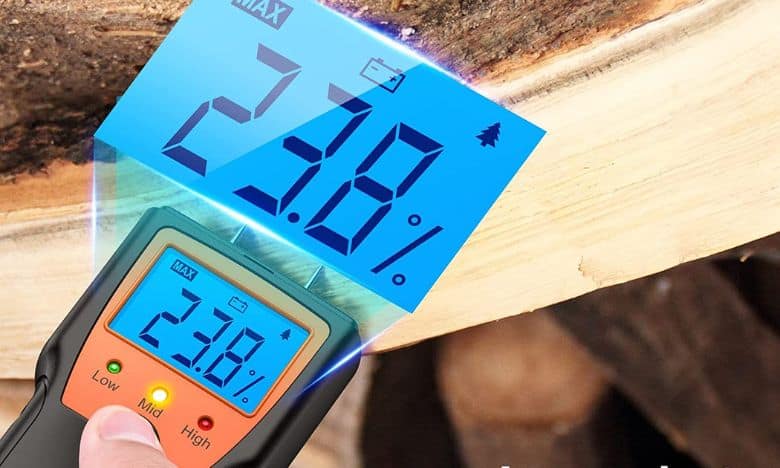
To dry and season firewood successfully and ensure a moisture content below 20%, stack timber in an arid region and cover it using a tarp before assessing levels with a moisture meter.
Taking these steps can avoid problems like difficulty reaching high temperatures when cooking pizzas or smoke intruding into the oven too frequently.
Importance of Moisture Content
When it comes to using a pizza oven, the moisture content of your firewood is essential for getting high-quality results. The ideal level should be 20% or below.
Too much moisture can cause excessive smoke and soot production, leaving you with soggy pizzas instead of crisp bases. On the flip side, overly dry wood might end up burning too quickly, making controlling the heat more challenging.
Investing in a good quality Wood Moisture Meter for Firewood can truly make all the difference for making pizza in wood burning ovens.
Sticking within this recommended range of moisture content helps guarantee consistent excellent performance from your pizza oven every time!
Woods to Avoid in Your Pizza Oven
When it comes to selecting a pizza oven wood, there are tons of great options out there! However, not all woods are suitable cooking wood, and you might end up with the completely wrong wood for the task.
Burning sap-filled or chemically treated lumber or overly moist timber should be strictly avoided when using your pizza oven or brick ovens.
High Sap Content Woods
When it comes to pizza ovens, certain types of wood should be avoided due to their high sap content. High sap content woods release creosote that can build up in your pizza oven and ultimately lead to disaster.
Treated or Chemically Altered Woods
Using chemicals to enhance the durability or pest resistance of treated wood should be avoided in pizza ovens, as their burning can release noxious fumes that are hazardous to your health.
How Much Wood Do You Need for Your Pizza Oven?
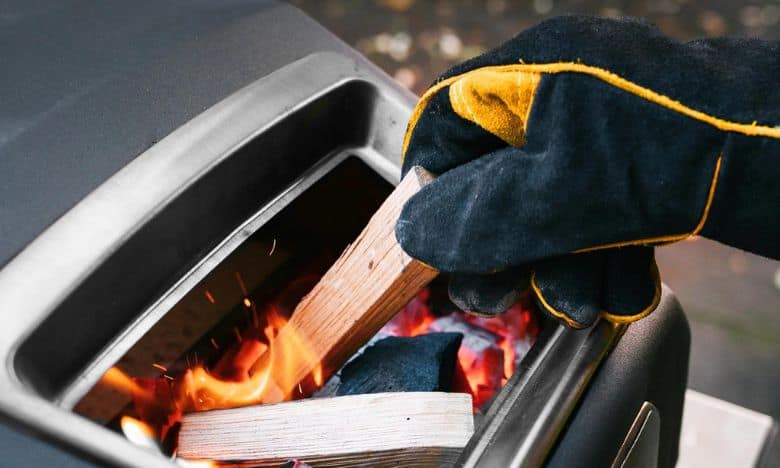
The amount of wood needed depends on the type of pizza oven you have!
In most cases, five small logs are enough to create the necessary fire and bring your pizza oven up to the desired temperature. From there, you can adjust how much wood needs to be added depending on a few different things – such as size of oven, retention of heat and overall performance. .
Experimenting with Wood Combos for Unique Flavors
Wood-fired pizza is a world of flavor possibilities that can be tailored to suit anyone’s preferences. Combining different hardwoods such as oak, maple, hickory, or cherry with more delicate fruitwood options like apple and peach gives the pies an enticing taste profile.
Daring cooks may even find some excitingly delicious new combinations by stepping out of their comfort zone! In any case, experimenting with wood for pizza will certainly result in pizzas whose flavors reach entirely new heights.
Troubleshooting Common Wood-Fired Pizza Oven Issues
When it comes to wood fired pizza ovens, it’s best to avoid using totally green wood. These freshly cut woods can prevent the temperatures from reaching a high enough level and result in uneven cooking results.
Opt for kiln-dried hardwoods instead as they are less likely to produce soot buildup while providing consistent heat when preparing your pizzas.
Regularly inspect the inside of your pizza oven for creosote build up. This black or sooty residue should be addressed promptly if present!
By following these tips, you’ll ensure that you get maximum performance out of your wood fired pizza making experience every time!
Summary
Mastering the art of wood-fired pizza is easy when you choose a good type of wood and season it well. High sap content, chemically altered or treated woods should be avoided to get the best out of your pizza oven experience.
Follow our tips for successful cooking! Get all your ingredients ready, fire up an amazing pizzeria in your own backyard and enjoy deliciousness like never before, bon appetit!
Best Wood For Pizza Ovens FAQs
What type of wood is best for pizza oven?
What wood do Italians use in pizza ovens?
Is birch or oak better for pizza oven?
Can you use any hardwood in pizza oven?
For maximum temperature and efficiency, ensure your wood is dry, treated correctly, and cut in the right size and thickness for your oven.
